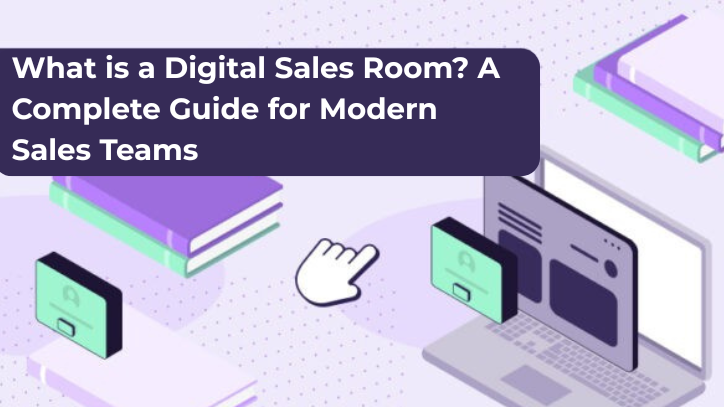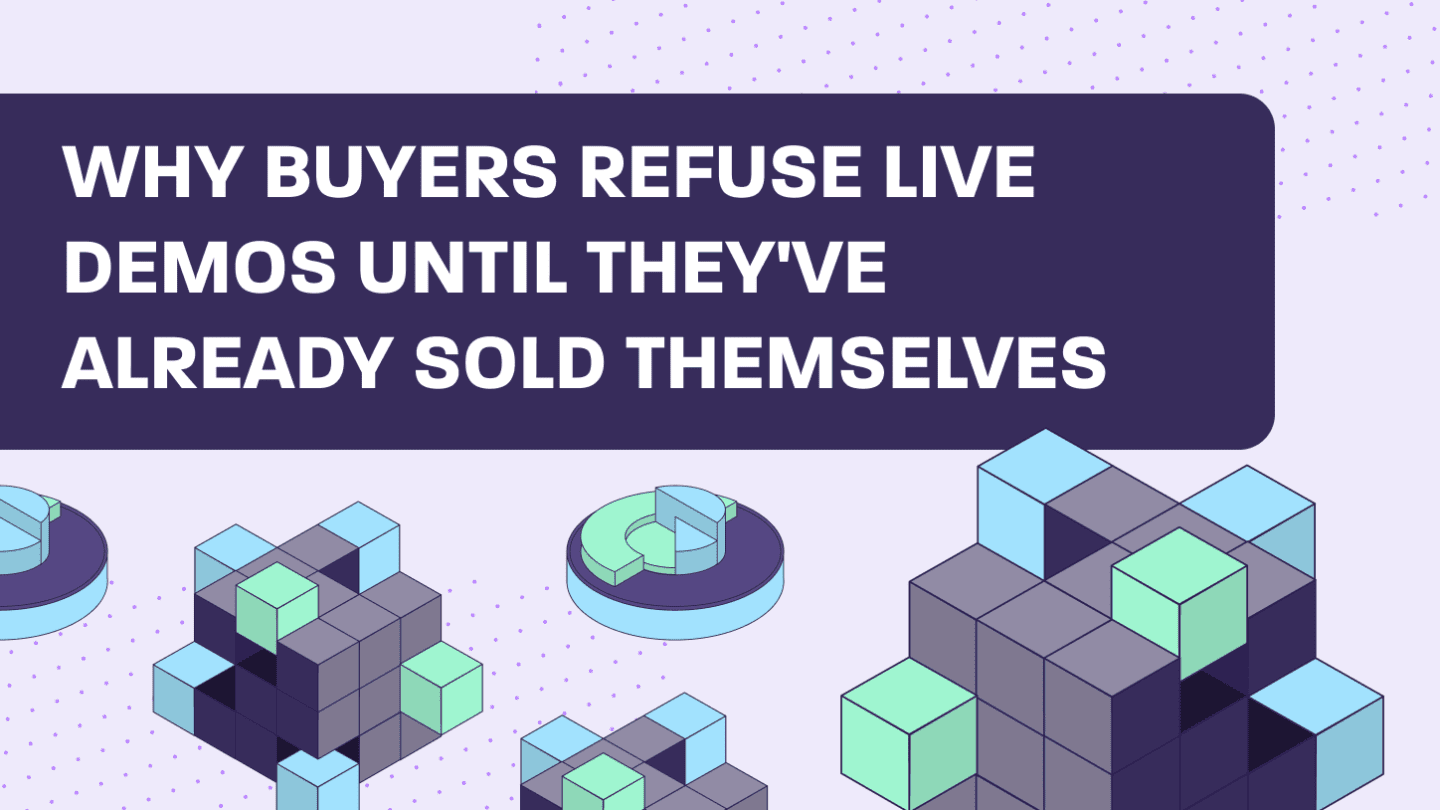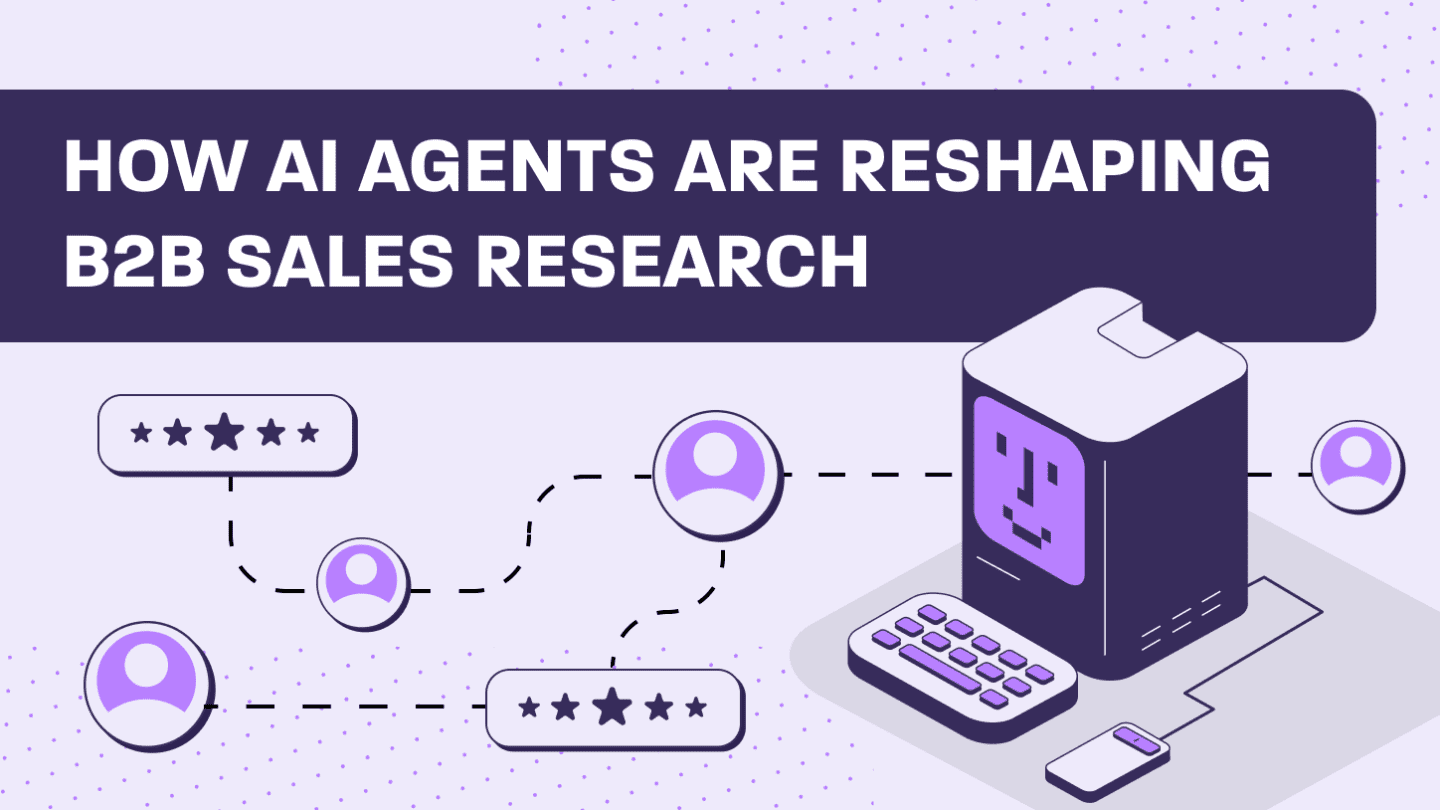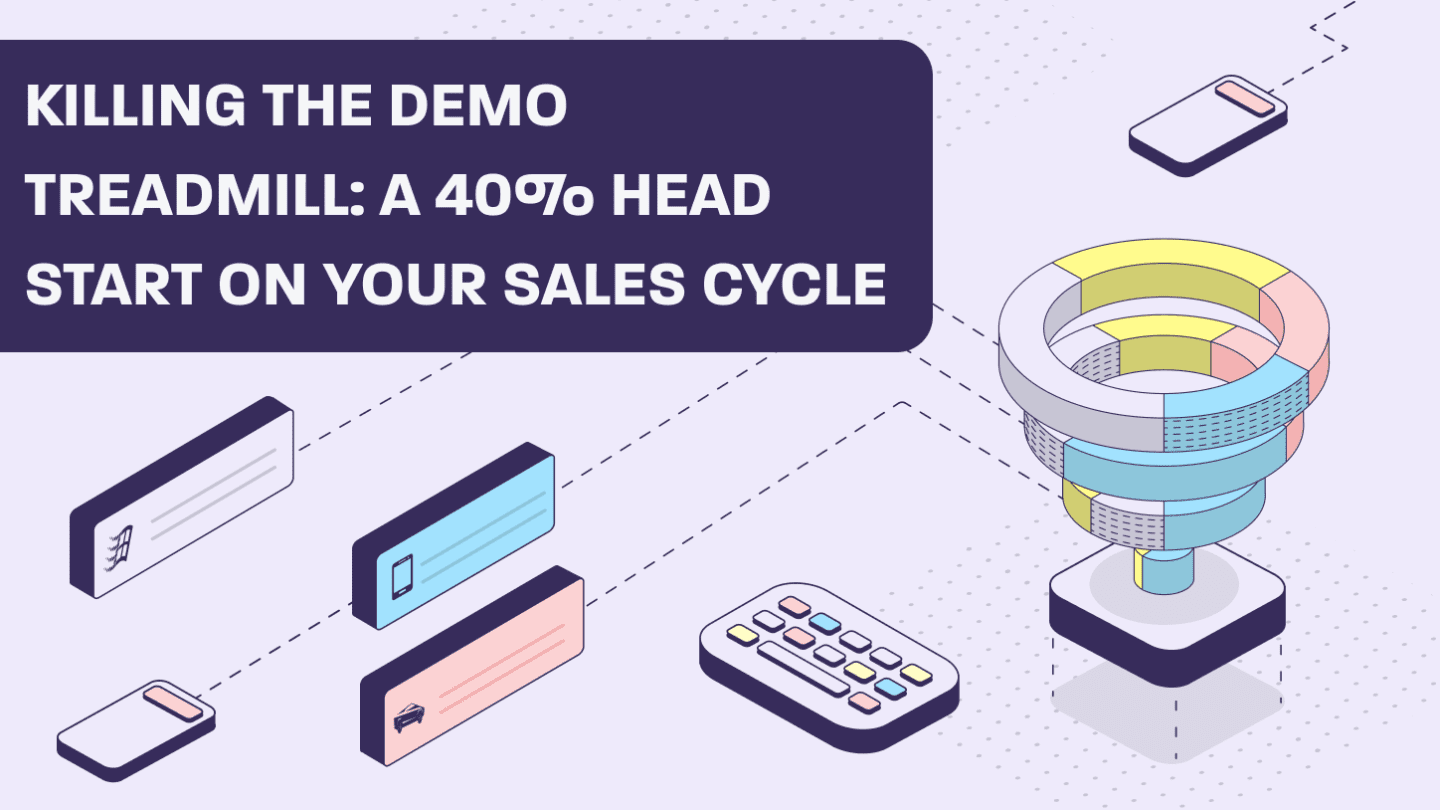What is a Digital Sales Room?
A digital sales room (DSR) is a secure, personalized website or portal where sales teams can organize all their interactions with potential buyers. Think of it as a modern, branded hub that replaces messy email threads with a clean, easy-to-use experience.
Each digital sales room is built for one specific customer’s buying journey. It holds everything they need, for example:
- Interactive product demos that show your solution in action
- Pricing breakdowns that make costs crystal clear
- Case studies from similar customers
- Personalized videos that speak directly to their needs
- Contract templates and onboarding guides
This setup helps buyers make decisions faster while giving your sales team the tools to guide them toward a confident “yes.”
Why Digital Sales Rooms Matter for B2B Sales Teams
Modern B2B buyers don’t want endless email chains or static PDF attachments. They want a better way to research, compare, and buy from vendors. That’s where a digital sales room comes in.
A digital sales room is changing how businesses sell and how customers buy. This complete guide shows you everything you need to know about digital sales rooms, from what they are to how they can boost your sales results.
How did Digital Sales Rooms Start
DSRs are relatively new. Digital Sales Rooms began to take shape in the early 2000s as sales teams experimented with fragmented digital tools to support virtual selling. But it wasn’t until the late 2010s that DSRs emerged as a cohesive category—driven by the growing demand for buyer autonomy, streamlined collaboration, and always-on access to sales content.
Since then, DSRs have evolved into a critical component of the modern B2B sales tech stack, enabling teams to deliver personalized, self-guided buying experiences at scale. And the momentum is only growing: Gartner predicts that by 2026, 30% of B2B sales cycles will be managed through digital sales rooms, underscoring their rising strategic importance in high-performing revenue organizations.
The Problems with Traditional B2B Sales Processes
Before we dive into digital sales room solutions, let’s look at what’s broken in today’s sales approach. Even companies using digital tools often struggle with these common issues:
Content Chaos: Buyers get lost in massive email threads, trying to find the most recent proposal, demo video, or pricing sheet. Important information gets buried and forgotten.
Too Much Friction: Simple tasks become complicated. Prospects waste time hunting for documents, coordinating meetings across different time zones, and waiting for manual follow-ups that slow everything down.
Flying Blind: Sales teams often have no idea who’s actually looking at their materials or what content works best. This lack of visibility turns follow-up into guesswork instead of strategy.
One-Size-Fits-All Approach: Creating truly personalized experiences for each prospect is nearly impossible with traditional tools. Everything feels generic and mass-produced.
Stakeholder Confusion: When multiple decision-makers from different departments need to stay aligned, traditional methods fall apart. Everyone ends up working with different versions of information.
These problems don’t just frustrate sales teams—they cost real money in lost deals and longer sales cycles.
Companies using digital sales rooms see real results. Here’s what typically happens:
Faster Sales Cycles: Buyers can access what they need instantly, without waiting for email responses or scheduling more meetings.
Better Team Alignment: When all stakeholders can see the same information in one place, everyone stays on the same page.
Higher Conversion Rates: More quote-to-contract conversions happen when buyers have easy access to all the details they need.
Scalable Demo Delivery: Your team can deliver consistent, high-quality presentations without starting from scratch each time.
According to Gartner, by 2026, 30% of B2B sales cycles will be managed through digital sales rooms (DSRs), indicating a significant shift towards integrating these platforms within the sales process. This shift reflects the growing importance of buyer-friendly experiences in B2B transactions.
How Digital Sales Room Analytics Drive Revenue Growth
Static PDFs and long email chains can’t tell you what’s actually working with your prospects. Digital sales rooms come with powerful tracking tools that give you clear insights into buyer behavior.
You can see exactly:
- Which documents get viewed and which get ignored
- How much time prospects spend on each piece of content
- Which team members from the buyer’s company are engaging
- When someone visits multiple times (a strong buying signal)
This isn’t just nice-to-have information. It’s a roadmap to what your prospect really cares about. Your sales team can use this data to personalize their follow-up, address concerns before they become objections, and move deals forward with confidence.
Creating Personalized Buyer Experiences That Convert
Relevance always wins. Digital Sales Rooms (DSRs) allow sellers to create a curated experience that feels bespoke—not broadcast. Each room can be customized to reflect the prospect’s industry, pain points, personas, and even brand aesthetics. Think: their logo, their terminology, their success metrics—front and center.
This level of personalization goes far beyond the capabilities of traditional email threads or static attachments. Instead of forcing buyers to dig through folders or forward clunky PDFs, you’re giving them a polished, centralized space that says: “We built this for you.”
You can customize the look and feel to match their company branding, include only the content that fits their specific use case, and organize everything in an easy-to-navigate format.
The result? Buyers feel seen, valued, and far more confident that you understand their world. And when your solution is delivered in a context that aligns with their needs, it becomes easier to envision as a fit.
This level of personalization turns boring sales materials into an engaging buying experience that prospects actually want to use.
Digital Sales Room Benefits for Complex B2B Decisions
Most B2B purchases involve multiple decision-makers from different departments. A digital sales room replaces scattered email inboxes and separate conversations with one shared workspace.
Inside this flexible portal, all stakeholders can see a clear list of action items and who’s responsible for what. This improves communication and removes the bottlenecks that slow down internal approvals.
Maintaining Momentum After Your Demo
The power of a digital sales room doesn’t stop after your initial demo. As buyers move through later stages—reviewing quotes, checking legal terms, or planning implementation—the DSR grows with them.
Since all materials are already organized in one place, your customer success team can pick up exactly where sales left off. This smooth handoff shortens time-to-value and creates a better overall customer experience.
Digital Sales Room Software: What Buyers Really Want
From the buyer’s perspective, digital sales rooms solve major pain points in the traditional B2B buying process. Here’s what they get:
One Central Hub: All vendor information, conversations, and materials in a single location instead of scattered across emails and attachments.
Self-Service Access: The ability to review demos, documentation, and pricing on their own schedule without waiting for sales reps.
Clear Next Steps: Always knowing what happens next and who’s responsible for each action.
Timeline Visibility: Understanding exactly where they are in the buying process and what to expect.
This isn’t just more convenient for buyers—it’s more empowering. Customers feel in control, well-informed, and confident in their decisions.
Benefits for Sales Teams: Turning Friction into Flow
Digital Sales Rooms (DSRs) aren’t just a buyer-facing asset—they’re a game-changer for the sales team behind the scenes. From the first touchpoint to the final handoff, DSRs streamline workflows, reduce manual effort, and help reps sell with more clarity, confidence, and control.
Improved Organization
No more digging through email threads, Slack messages, or disjointed cloud folders. DSRs centralize all deal-related assets—discovery call recordings, proposal decks, pricing documents, case studies, and technical collateral—into a single, easy-to-navigate portal. Everything a rep (or a buyer) needs is right there, always up to date, and always accessible.
Enhanced Tracking and Deal Intelligence
Real-time engagement analytics give reps visibility into how buyers interact with the deal room:
- Who’s viewing which assets
- How much time they spend on each section
- Who they forward it to internally
This insight transforms guesswork into strategy. Instead of following up blindly, reps can tailor outreach based on demonstrated interest—striking while the deal is hot and avoiding unnecessary pressure when it’s not.
Elevated Professionalism
Let’s be honest: sending six attachments in a follow-up email isn’t exactly a power move. A branded, beautifully organized DSR reflects a higher level of polish and credibility. It shows that your company is serious about its solution and serious about winning the deal.
Accelerated Sales Cycles
When buyers don’t have to ask for missing files, wait for email replies, or chase internal approvals without context, they move faster. DSRs reduce bottlenecks by putting everything they need – demos, FAQs, contracts, and case studies, at their fingertips. Less friction = faster decisions.
Smoother Post-Sale Handoffs
Deals don’t end at signature and neither should your organization. Because everything is already centralized in the sales room, customer success and implementation teams can pick up where the sales team left off without losing context. That means faster onboarding, fewer miscommunications, and a better customer experience from day one.
When to Use Digital Sales Room Platforms
Not every deal needs a digital sales room, but in the right situations, they’re a game-changer. DSRs work best when:
- Multiple decision-makers are involved across different departments
- The buying journey includes technical demos, custom pricing, and contract reviews
- The customer values flexibility, speed, and independence in their buying process
- Your team needs real-time insights and scalable content delivery
When used strategically, a digital sales room becomes more than just a workspace it becomes a competitive advantage that sets you apart from vendors still using outdated sales processes.
Digital Sales Room Tools: Key Features to Look For
The market offers many digital sales room options, from simple tools to enterprise-level platforms. When evaluating your choices, focus on:
CRM Integration: Seamless connection with your existing sales and marketing systems so data flows automatically.
Custom Branding: The ability to make each room look professional and match your company’s visual identity.
Engagement Analytics: Rich tracking and reporting to measure how prospects interact with your content.
User-Friendly Design: Easy navigation for both your internal team and your customers.
Security and Compliance: Enterprise-grade protection that meets your industry’s requirements.
The right platform supports live demos, recorded presentations, interactive quotes, collaborative reviews, and more—all within one polished interface.
Digital Sales Room Best Practices for Maximum Results
To get the most value from your digital sales room, follow these proven best practices:
- Design for Your Customer: Focus on answering their questions, not just showcasing your features. Put yourself in their shoes and organize content based on their priorities.
- Use Consistent Templates: Save time and build trust by using familiar structures across all your rooms. Consistency helps prospects know what to expect.
- Monitor Engagement Data: Use analytics to optimize your follow-up timing and messaging. If someone spends extra time on pricing, that’s your cue to discuss budget.
- Keep Content Fresh: Regularly update pricing, case studies, and resources to ensure accuracy. Outdated information damages credibility.
- Match Content to Buying Stage: Support each phase of the buyer’s journey with the right mix of educational, proof-based, and decision-making content.
Digital Sales Room Examples and Use Cases
Here are some common ways successful companies use digital sales rooms:
- Enterprise Software Sales: Complex deals with long sales cycles, multiple demos, and detailed security reviews benefit from organized, trackable content delivery.
- Professional Services: Consulting firms use DSRs to present proposals, case studies, and team credentials in an impressive, easy-to-navigate format.
- Manufacturing and Industrial: Companies with complex products create rooms that include technical specifications, compliance documentation, and implementation timelines.
- Financial Services: Banks and fintech companies use secure DSRs to share sensitive information, compliance details, and onboarding processes.
Each industry adapts the digital sales room concept to fit their specific needs and buyer expectations.
Digital Sales Room ROI: Measuring Success
The return on investment from digital sales rooms typically shows up in several key areas:
- Shorter Sales Cycles: Faster decision-making when buyers can access information on-demand instead of waiting for email responses or meetings.
- Higher Win Rates: More informed prospects who feel confident in their decision are more likely to choose you over competitors.
- Improved Team Efficiency: Sales reps spend less time on administrative tasks and more time on high-value selling activities.
- Better Customer Experience: Smoother handoffs and organized information create positive impressions that lead to referrals and expansion opportunities.
Getting Started with Your Digital Sales Room Strategy
Ready to transform your sales process with a digital sales room? Here’s how to get started:
- Audit Your Current Process: Identify where prospects get stuck or confused in your current sales cycle.
- Choose the Right Platform: Select a digital sales room tool that integrates with your existing tech stack and meets your security requirements.
- Create Templates: Build standardized room templates for your most common deal types and buyer personas.
- Train Your Team: Ensure your sales and customer success teams know how to create, customize, and optimize digital sales rooms.
- Measure and Improve: Use engagement data to continuously refine your content and approach.
Whether you’re sharing a demo, delivering a quote, or collaborating on implementation plans, a well-executed digital sales room replaces friction with flow—and builds trust every step of the way.
Digital sales rooms represent the future of B2B sales. They give both sellers and buyers the control, visibility, and efficiency they need to move faster and make smarter decisions. The question isn’t whether you should adopt this technology—it’s how quickly you can implement it to stay ahead of the competition.
Buyers don’t want more content—they want clarity.
Build a demo that delivers it.





